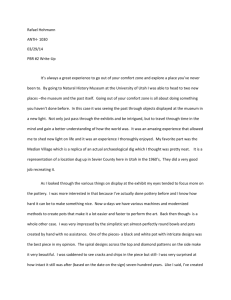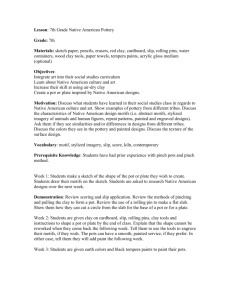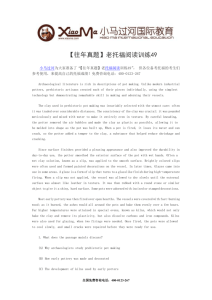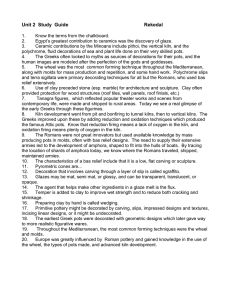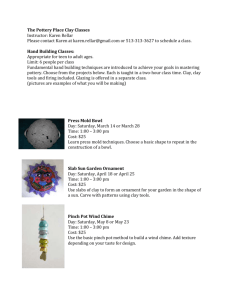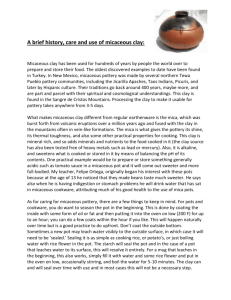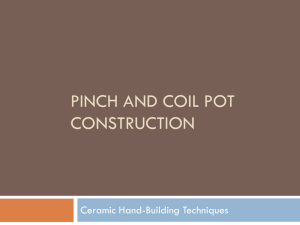Unit 1 Study Guide
advertisement
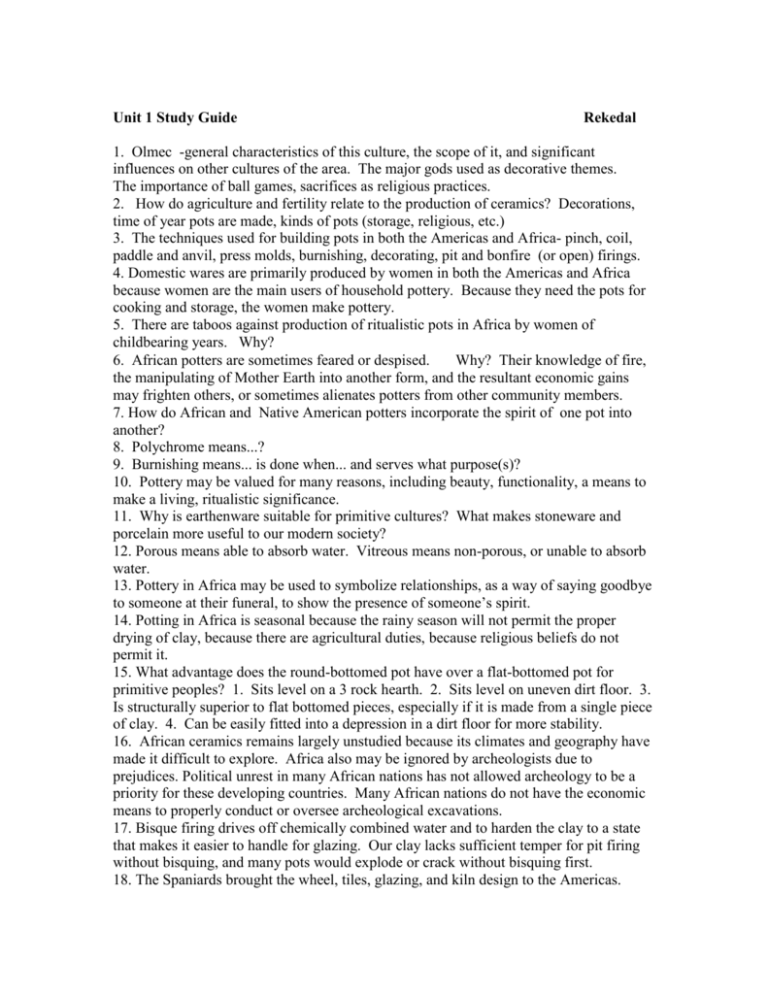
Unit 1 Study Guide Rekedal 1. Olmec -general characteristics of this culture, the scope of it, and significant influences on other cultures of the area. The major gods used as decorative themes. The importance of ball games, sacrifices as religious practices. 2. How do agriculture and fertility relate to the production of ceramics? Decorations, time of year pots are made, kinds of pots (storage, religious, etc.) 3. The techniques used for building pots in both the Americas and Africa- pinch, coil, paddle and anvil, press molds, burnishing, decorating, pit and bonfire (or open) firings. 4. Domestic wares are primarily produced by women in both the Americas and Africa because women are the main users of household pottery. Because they need the pots for cooking and storage, the women make pottery. 5. There are taboos against production of ritualistic pots in Africa by women of childbearing years. Why? 6. African potters are sometimes feared or despised. Why? Their knowledge of fire, the manipulating of Mother Earth into another form, and the resultant economic gains may frighten others, or sometimes alienates potters from other community members. 7. How do African and Native American potters incorporate the spirit of one pot into another? 8. Polychrome means...? 9. Burnishing means... is done when... and serves what purpose(s)? 10. Pottery may be valued for many reasons, including beauty, functionality, a means to make a living, ritualistic significance. 11. Why is earthenware suitable for primitive cultures? What makes stoneware and porcelain more useful to our modern society? 12. Porous means able to absorb water. Vitreous means non-porous, or unable to absorb water. 13. Pottery in Africa may be used to symbolize relationships, as a way of saying goodbye to someone at their funeral, to show the presence of someone’s spirit. 14. Potting in Africa is seasonal because the rainy season will not permit the proper drying of clay, because there are agricultural duties, because religious beliefs do not permit it. 15. What advantage does the round-bottomed pot have over a flat-bottomed pot for primitive peoples? 1. Sits level on a 3 rock hearth. 2. Sits level on uneven dirt floor. 3. Is structurally superior to flat bottomed pieces, especially if it is made from a single piece of clay. 4. Can be easily fitted into a depression in a dirt floor for more stability. 16. African ceramics remains largely unstudied because its climates and geography have made it difficult to explore. Africa also may be ignored by archeologists due to prejudices. Political unrest in many African nations has not allowed archeology to be a priority for these developing countries. Many African nations do not have the economic means to properly conduct or oversee archeological excavations. 17. Bisque firing drives off chemically combined water and to harden the clay to a state that makes it easier to handle for glazing. Our clay lacks sufficient temper for pit firing without bisquing, and many pots would explode or crack without bisquing first. 18. The Spaniards brought the wheel, tiles, glazing, and kiln design to the Americas.


